Before you learn the exact move-by-move chess opening theory, you should learn the Chess Opening Strategy. You can do so by learning three important opening principles.
Especially for Beginner chess players, these basic chess opening principles will be much more valuable than any amount of opening theory.
By understanding the chess opening strategy, you will be able to make good moves even if your opponent plays something you have never seen before. Here are the three chess opening principles that will guide you through the first phase of the game:
- Activate your pieces
- Fight for the center
- Get your King into safety
If you apply these beginner chess opening principles well, you will see your results improve without learning the concrete opening theory.
Opening Principle #1: Activate Your Pieces
Think of your pieces not only in terms of points (Bishop/Knight=3, Rook =5, Queen =9) but rather in potential points. On their starting squares, your pieces are quite ineffective. You can’t make damage to your opponent’s King this way.
So you need to put your pieces on better squares for them to reach their full potential. You do that by developing and activating your pieces.
Common Chess Opening Mistakes
When I see a beginner trying to use Chess Opening principle #1, I usually see three main mistakes:
Moving one piece several times
It is nice to try to get the most out of a single piece. But one piece alone won’t be as effective as a whole army together. So make it a point to develop every piece only once in the opening. Obviously, this does not apply if a piece is attacked and needs to get into safety.
But in most cases, developing every piece before moving them a second time will increase the potential of your army tremendously. Think of it like a team sport. One football player alone has a hard time getting through the defensive lines. But if the whole team plays together, defending a well-played attack is basically impossible.
Once you learn to use the potential of all your pieces, you will be able to take your chess to the Next Level.
Bringing out the Queen too early
You might think, “oh, my Queen is the most valuable piece, so let’s get her out first”. This is at least what I see in many Beginner’s games. Sadly, this is not the right approach.
Why?
Because your Queen is extremely vulnerable! Every time she gets attacked by a piece, she needs to be moved. Protecting her does not make sense, as you won’t like to trade her for a Bishop, Knight, or Rook. Think of your Queen like a Quarter-Back in American Football. The most important player needs to be protected and strikes only when the other part of the team has done some damage.
There is a reason why we call it Quarter-Back and not Quarter-Forward! Just remember Q-Back and you’ll be sure to keep your Queen in safety a little longer. As an example, look at the following game one of my students won with black.
White moved their Queen 4 times before losing her on move 9. This was all due to the bad move 3.Qh5? You can play through the game with some comments here.
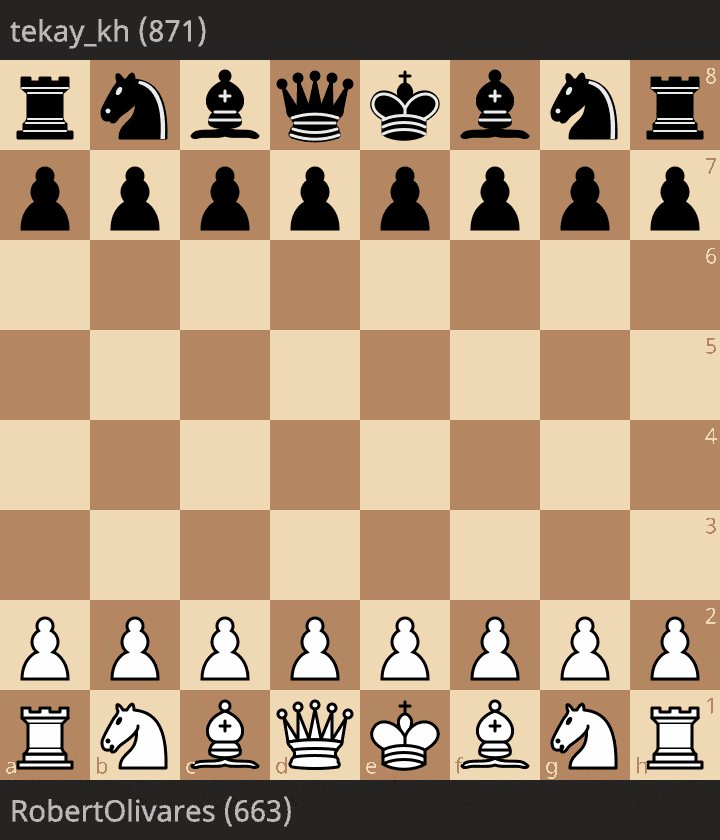
Treating Pawns as Pieces
As mentioned above, in chess literature a pawn is usually not included when we talk about a piece. This might be a little confusing and leads to early mistakes. So when I say: move all your pieces once, I DO NOT mean that you should move every single pawn at least once in the opening.
But why is that so bad, you might ask? There are two main reasons:
1. Your King will be exposed
Think of your pawns in front of the King as of the Swiss Guard for the Pope. Those trustworthy soldiers don’t make a move unless it is absolutely needed!

Once the pawn shield in front of the King is gone, your kind is vulnerable to attacks. You don’t want to make it easier for your opponent to checkmate you!
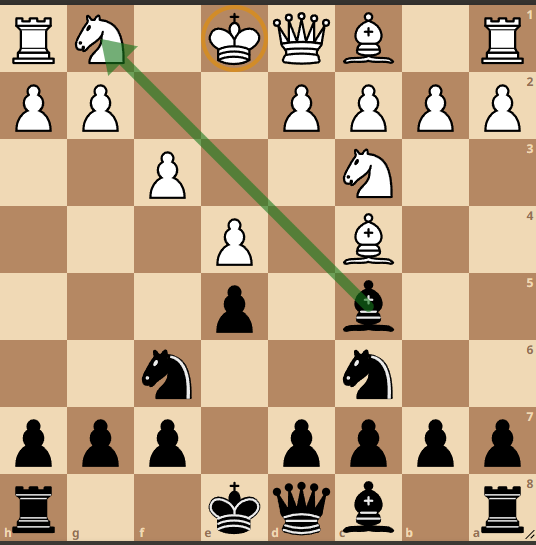
2. Pawns can’t Move Back
When a piece is getting a bit out of line and gets attacked, it can retreat into safety. Pawns do not have this privilege. Once they move forward there is no way back. So every pawn move is very committal! That is also why moving pawns when you don’t know what to do is a bad idea. More often than not, you will wish to move back your pawn later on in the game.
The further your pawns are advanced, the more weaknesses you will have in your position. Again, that makes it easier for your opponent to find entry squares for their pieces. Not what we want!
In the opening, you generally want to move your e&d pawns in order to bring your Bishops out. You might want to move your Rook-Pawns (h&h) one square up to give a little room for your king and avoid a Bishop or Knight on a nasty square (g4/g5, b4/b5).
That’s it! If you don’t have a reason to make another pawn move, don’t do it.
Opening Principle #2: Fight For The Center
As I pointed out in my article on Beginner Chess strategy, a Knight in the center of the board controls 8 squares, while a knight in the corner only controls 2. That is a 4x effect just by using the Knight the right way.
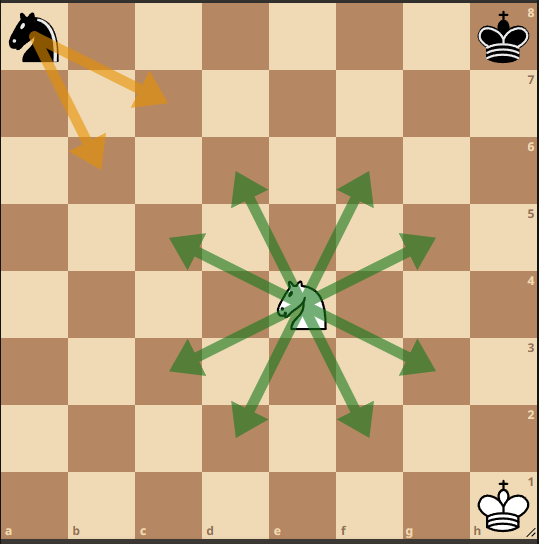
Not bad, huh?
The same goes for other pieces. Bishops in the center usually control two important diagonals instead of only one, and the Queen can control up to 27 of 64 squares if placed correctly. In order to place your pieces well, you should control the center of the board.
Don’t start by randomly moving side pawns. Get your e&d pawns moving, develop your pieces, and fight for the center of the board. If your opponent only moves flank pawns, don’t get irritated; just say “Thank you very much!”. They will have a difficult time putting their pieces on decent squares without any central control.
An attack on the side is usually only effective if you also control a little bit of the center. If not, your opponent has an easy job defending one side, thanks to the flexibility of their pieces. Here is a great setup for central board control. Keep that in mind when choosing where to place your pawns & pieces at the beginning of each game.
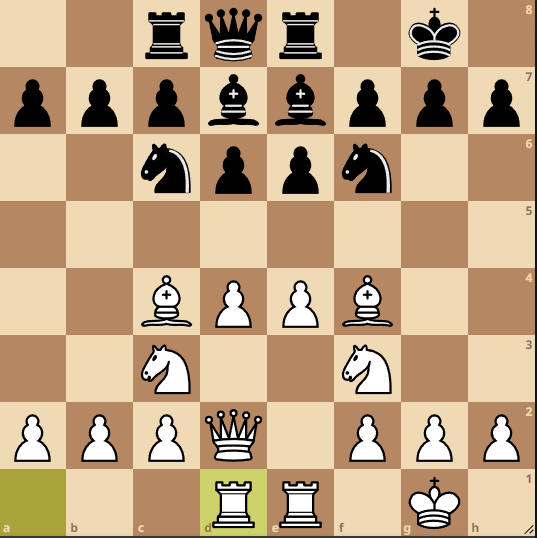
Again, if your opponent is kind to let you place all your pieces on their optimal square, say thanks and do it. You don’t need to play strange moves to beat strange moves. The way to beat bad/strange moves is to counter them with logical/good moves.
Opening Principle #3: Get Your King Into Safety
Be kind to your king, and don’t present him on a silver platter to your opponents! The king needs protection during the whole game. Only when many pieces are traded does the king wake up from his winter sleep and help his army in the endgame.
In the opening phase, we are far away from that. Make it a priority to keep your king safe. One great way to do so is by castling. What might seem like a magic trick to some beginners (how can you move two pieces at once?) is a standard move in many games.
By casting, you get your King away from the center, where usually files will open up quickly. You also get the Rook out of the miserable corner and give it a perspective for future engagement. As you start out, I encourage you to castle every single game. It is a good habit to bring your king into safety even if in some very specific situations, you would not have to.
First, you need to learn and apply the rule before you will find out about the exceptions.
Chess Opening Strategy In Grandmaster Games
As a matter of fact, the basic Chess Opening strategy still applies even during Grandmaster games. The thing that divides us from other players is that we are very good at using these principles and finding some cunning exceptions occasionally.
Don’t try to be too smart when starting out, just stick to the principles. You will be right most of the time, which is already great. Now, as you can castle on two sides, here is what you must know.
Castling Kingside is referred to as ‘short-castle’ (or 0-0 in chess notation) while castling Queenside is referred to as ‘long-castle’ (0-0-0), so how do you decide where to castle? Again, I like to keep it as simple as possible.
Castle short every time if there is no specific reason not to. You will be able to do it quicker than castling long as you don’t need to get your Queen out of the way. This frees up some more mental energy for more important decisions during the game.
An exception could be if your opponent has lined up all their pieces toward your kingside and you lack any piece protection there.
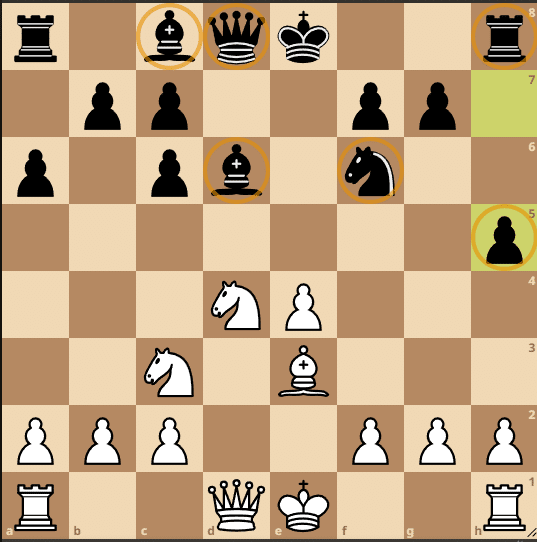
In this position, most black pieces are ready to attack your King once it is on g1. The Bd6 hits h2, the Nf6 will go to g4 (supported by the pawn h5 and Bc8), and then the Queen will go to h4 and threaten a checkmate on h2.
That is why, in this position, you have good reason to castle long. Your King on c1 will be much safer as you have a nice defender (Nc3), and black pieces are far away from attacking the King on c1. So in the Diagram position above, you should play Qd1-d2 and next move 0-0-0 (the long castle!).
The second exception would be if you did not follow my earlier advice and randomly moved all the pawns on the Kingside already… But again, as a rule of thumb, castle short in every game you play when you start out unless you have a very good reason not to.
Beginner Chess Opening Principles: Summary
Knowing the three main Chess opening principles:
- Activate Your Pieces
- Fight for the Center
- Getting Your King into safety
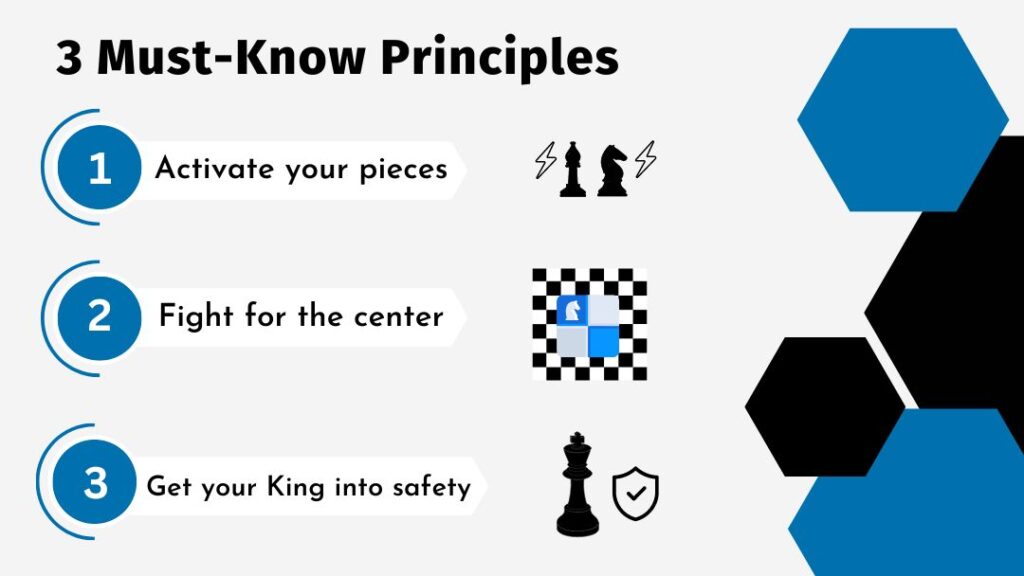
will help you find good moves more often in your games. Make sure to keep them in mind whenever you play chess. The aim, especially for Beginner chess openings, should be to have easy opening moves. This will make it Beginner-friendly and avoid mistakes early on.
Once you manage to put these Chess opening principles to work, you are ready to learn a little bit of opening theory or to learn the principles of chess strategy in the middle game. If you want to deepen your knowledge of Chess opening principles, make sure to check out Chessmood’s course on it.
